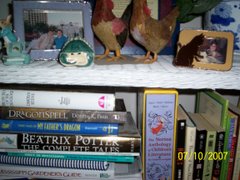My favorite literary genre is the mystery. I prefer those written by women featuring women protagonists. I also am fascinated by real life mysteries, hence, my strong attraction to Amelia Earhart: an independent, strong willed woman and the question of what happened to her. Amelia disappeared during her 1937 attempt to be the first woman to fly around the world. There have been many suggested solutions to what happened to her but no definitive answer. She remains an enduring, intriguing mystery. But what is known about her makes her one of my most admired women of history. Earhart was the first woman to fly the Atlantic solo (1932) and the first woman to fly non stop coast to coast across the United States (1933).
Women must try to do things as men have tried. When they fail, their failure must be but a challenge to others.She is known to have been “exceedingly fond of reading” especially in the large family library of her grandparents.
Another of my most admired women is Eleanor Roosevelt as noted in my blog entry of August 29, 2007.
Eleanor Roosevelt: A Life of Discovery
Russell Freedman
Newbery Honor
New York: Clarion Books, 1993

Eleanor was a First Lady of Firsts. She gave the first ever press conference given on the record by a First Lady. She held regular press conferences for women reporters only. She refused a limousine and bought herself a blue roadster which she drove herself. She flew in airplanes - all over the world, “serving as her husband’s personal investigative reporter and gathering material for her columns, articles, radio talks, and books.” During WWII, Eleanor visited American troops traveling “23,000 miles in a cramped, unheated, four-engined bomber.” She comforted the soldiers in hospitals. After Franklin’s death, Eleanor was asked to serve as a delegate to the first meeting of the United Nations General Council and was elected chair of the United Nations’ Human Rights Commission. She met the leaders of the world including Khrushchev. Eleanor never allowed herself to slow down. “ ‘Life has got to be lived - that’s all there is to it,’ she said.”
How fortunate that we know that these two women met and spent a memorable evening together.
On April 20, 2933 Amelia Earhart and her husband spent the night at the White House at the invitation of Eleanor Roosevelt. During the formal dinner that evening, Amelia and Eleanor eagerly shared their mutual love of adventure and their love of flying which culminated in Amelia arranging a flight over Washington, D.C. that very night while the two ladies were still dressed in their formal best! In Amelia and Eleanor Go For a Ride Pam Muñoz Ryan allows us to join these remarkable women on a joyous night in April of 1933.
Based on newspaper accounts, diaries, and book transcripts, Ryan's book is a joyous glimpse into a night when two independent, strong willed women shared their dreams in a way few of us will every experience.

Amelia and Eleanor Go For A Ride
By Pam Muñoz Ryan
Scholastic 1999
And by the way, Brian Selznick illustrated this title.
In my book . . . We should all, men and women, boys and girls, be willing to try and to fail and to try again.












